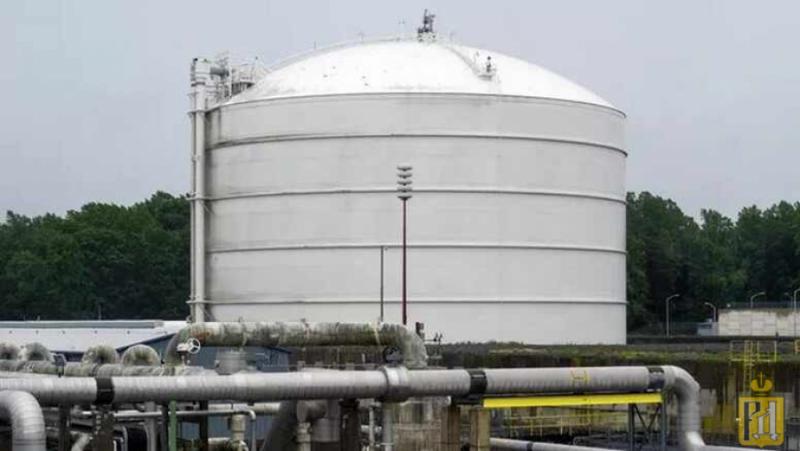/Pogled.info/ It is generally believed that the pipeline shortage will lead to additional demand on the LNG market. In general this is the case, but the time factor is fundamental. After all, gas is needed here and now, and new LNG can only be supplied in five years. But will this new LNG really be needed in five years beyond the planned volumes? As always, there are many uncertainties, but we intend to speculate on this topic.
News first. The other day it became known that two buyers at the same time – the trader “Vitol” and “Shell”, who needs no introduction, have terminated the contracts for the purchase of LNG from the future American liquefaction plant “Driftud”. The event once again postpones the adoption of an investment decision on this project and, consequently, the complete start of the works.
However, it is worth noting here that the price terms in the contracts were tied to the prices of LNG trade in Europe and Asia, meaning that LNG buyers under these contracts did not benefit from the relative affordability of gas in the US. . One way or another, Driftwood has been postponed again and there is no certainty about other new projects. After the green light for the construction of two plants in May and June (totaling 22 million tons per year), no new investment decisions are made, although it is now difficult to expect evident volumes of new LNG from anywhere outside. of Qatar and the United States.
Let us stress once again: on the one hand, it is heard everywhere that American LNG will benefit from the current situation in Europe, but there are not many solutions for new plants. Most likely, there is not too much optimism for long-term LNG in the gas market. What could be the reason for this paradox?
We have already discussed the simpler answer a little earlier: uncertainty about the future of Russian pipeline exports to Europe makes it difficult to make decisions about new LNG plants, as it is difficult to predict the future balance between supply and demand. Put simply: what if exports resume and the new LNG destined for Europe turns out to be redundant.
But now the situation has changed slightly. After recent explosions and leaks on at least three of the four Nord Stream lines, the chances of a resumption of exports to Europe are becoming even more slim. What follows from this? Firstly, we note that in this debate we still lack the scenario of a sharp increase in transit through Ukraine. While this option is theoretically and technically possible, it implies a significant reduction in tension between all the European parties to the conflict, including Kiev.
If this does not happen, Russian gas will be blocked for five to ten years while the construction of new pipelines will continue to China. But it takes about time to build new LNG plants of comparable capacity in the United States or anywhere in the world.
So, whether you like it or not, the world will have to reduce gas consumption during this period, replacing it with all possible surrogates (coal will likely come first, as will the combustion of petroleum products already outside the transport sector. ).
So, let’s imagine that the world is forced to reduce gas consumption. Five to ten years pass and the gas from the Russian pipeline enters the Chinese market. And if LNG, which in theory should have compensated for the Russian deficit, entered the world market at the same time, a new surplus would occur. Market participants also fear a collapse in prices, especially at a time when they question both the sustainability of low domestic gas prices in the United States and production costs in other regions of the world, with the exception of Qatar, which affects directly on the price of LNG yes.
Indeed, the main question is whether the world will be able and willing to recover quickly and drastically increase the amount of gas consumed after several years of enforced austerity to absorb double the additional supply. This is especially true for Europe, which has already announced a gradual reduction in its gas share in its plans.
It is true that presumably China and other Asian countries are always ready to increase volumes at a good price. But even here, not everything is so simple. If there are infrastructures in Europe that will not now be fully utilized, in the Asia-Pacific region they are being created only to gradually increase the demand for gas. This, in turn, will make it difficult to rapidly increase the demand for gas, even in the event of oversupply.
And, of course, another important circumstance for China is the guarantee of supply. Again, after the explosions in Nord Stream, considered a reliable source of gas supply, the likelihood that it will be difficult to rely on LNG in certain circumstances, especially on southern routes, only increases.
China this year, as you know, has significantly reduced the consumption of LNG, imports decreased by 20% in the first seven months of the year. The high price did its part. But it is possible that, in conditions of growing international tensions, the PRC does not in principle want to increase its dependence on imports of liquefied gas.
It is curious that a month ago we talked about the story: Europe quickly filled its gas deposits, also because the Chinese companies resold it part of their LNG, of Russian origin. But there is nothing unexpected about this. The LNG market is global and in any case all the reallocations will be made by the market (not the Chinese one, but the other traders) by focusing on the price difference.
In any case, the issue of competition between Russian LNG and pipeline supplies to Europe from Russia has already been raised in recent years. For example, Russian LNG interferes with gas supplies from Russia. But now a similar issue, only “the other way around”, is now worth discussing in the context of the Chinese market. It is clear that new pipeline exports to China will be protected by long-term contracts. The question is whether there will be room in China for the new Russian LNG if there will be a lot of pipeline exports. Additionally, China is looking to geographically diversify its raw material sources. It is true that LNG supplies from, for example, Qatar and Russia appear more reliable than American supplies in the scenario of deteriorating US-China relations.
Let’s summarize. Even assuming that Russian exports to the EU do not recover, the medium-term outlook for the LNG market appears ambiguous. Of course, in any case, the market will grow, but within the expected volumes, and not to compensate for Russian gas. In this forecast, the current moderate activity in the construction of new plants appears more logical. Furthermore, China may be wary of increasing LNG imports from countries that are not friendly enough.
In the longer term, the future of the gas market in general and the LNG market in particular will be determined by progress in the implementation of renewable energy projects. Here, traditionally, opposite signals are received: on the one hand, the current growth rates of the sector are quite good, on the other hand, any physical constraints (linked to extraction) if the same growth rates are maintained.
In conclusion, we recall that the consulting firm Rystad has recently published its long-term forecasts for the development of the LNG market, according to which the “peak of LNG” (ie the maximum demand for this product) will occur no earlier than 2034 The market volume, however, is expected to peak quite decent – over 700 million tons per year (now – about 400 million). Curiously, a significant part of this growth has not yet been confirmed by concrete projects. We will see how. But it could also be the other way around: Against the backdrop of the problems discussed above, we will see slower but longer-term market growth. That is, a sustainable gas era, especially if the pace of the energy transition continues to slow.
Translation: V. Sergeev
IMPORTANT!!! Dear Pogled.info readers, we are limited due to our positions! Go directly to the site www.pogled.info . Share on your profiles, with friends, in groups and on pages. In this way we will overcome the limits and people will be able to reach the alternative point of view on the events !?
When you see the “fake news” sign, it means that this article is recommended to read !!!
Subscribe to our YouTube channel / top right /: https://www.youtube.com
Become friends with Look.info on facebook and recommend it to your friends


